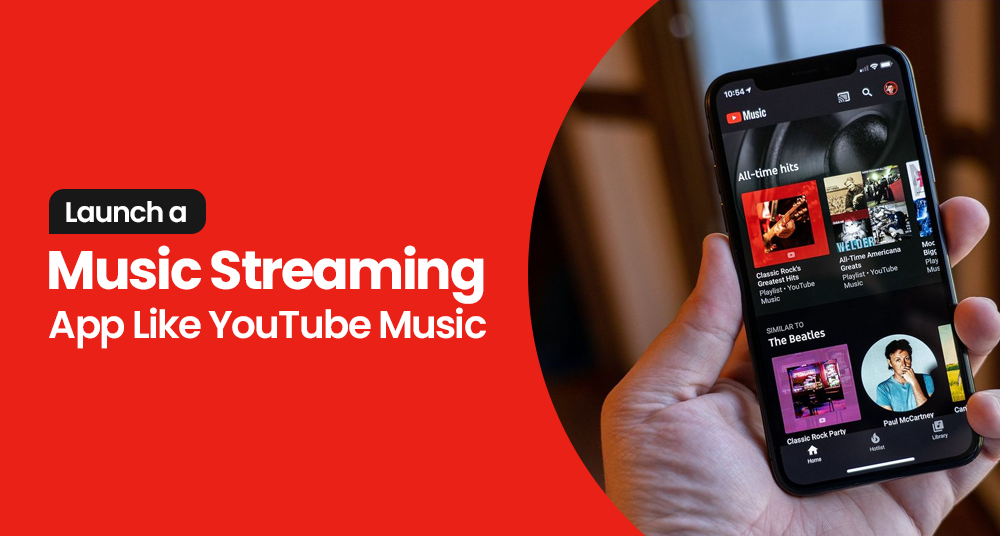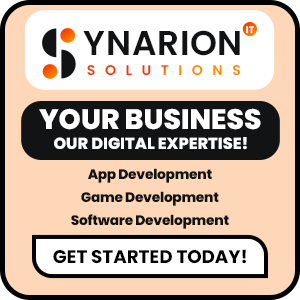The music industry is evolving faster than ever, and apps like YouTube Music, Spotify, and Apple Music are leading the revolution. What used to be about buying CDs or downloading MP3s has now transformed into on-demand music streaming, where users can instantly access millions of songs, videos, podcasts, and live events from a single app.
For startups and entrepreneurs, building a music streaming app like YouTube Music might sound intimidating. After all, it involves licensing, servers, AI recommendations, and top-notch design. But here’s the truth: with the right technology stack, monetization model, and development roadmap, even small businesses can enter the market and carve out a profitable niche.
This guide walks you through everything you need to know about building your own YouTube Music-like app in 2025 — from features and architecture to cost breakdowns, monetization models, and trends shaping the future of music streaming.
Why Build a Music Streaming App in 2025?
Before diving into features and tech, let’s talk opportunity.
- Exploding Market: The global music streaming market is projected to hit $103 billion by 2032 at a CAGR of 14.7%.
- Massive User Base: YouTube Music alone crossed 100M+ subscribers in 2024, while Spotify surpassed 600M users.
- Content Diversity: Users don’t just want songs—they want videos, podcasts, live concerts, and personalized recommendations.
- Monetization Potential: From subscriptions and ads to in-app purchases, premium events, and collaborations, revenue models are diverse and lucrative.
- AI & Personalization: Advanced algorithms now allow hyper-personalized playlists and mood-based suggestions, boosting retention.
In short: the demand is high, the technology is accessible, and the revenue potential is huge.
What is YouTube Music, and How Does It Work?
YouTube Music is a subscription-based music and video streaming service built on Google’s vast database. What sets it apart?
- Search Beyond Titles: Users can find songs even by typing a few lyrics.
- Audio ↔ Video Switching: Toggle between music video and audio-only with one tap.
- Explore Section: Discover new releases, trending tracks, remixes, covers, and live performances.
- Premium Perks: Ad-free listening, background play, offline downloads, and exclusive content.
- Personalized Recommendations: AI-driven playlists based on mood, history, and trending culture.
- Event Templates: AI-generated playlists for holidays, events, and trending occasions.
This seamless combination of music + video + AI recommendations is what makes YouTube Music a global powerhouse.
Must-Have Features for a Music Streaming App Like YouTube Music
If you’re building your own app, features will define your user experience (UX) and competitive advantage.
Basic Features (Non-Negotiables)
- User Onboarding & Profiles – Simple sign-up/login with social logins.
- Search & Filters – Powerful search with lyrics, genre, mood, artist, or album.
- Music Library – Vast catalog of tracks, albums, and videos.
- Audio/Video Playback – Smooth streaming with quality settings.
- Playlists & Favorites – Create, manage, and share custom playlists.
- Social Sharing – Share tracks on Instagram, WhatsApp, and more.
- Push Notifications – Alert users about new releases, trending tracks, or personal suggestions.
- Offline Mode – Download music/videos for offline play.
Advanced Features (Competitive Edge)
- AI-Based Recommendations – Smart playlists based on history, preferences, and global trends.
- Lyrics Integration – Real-time lyrics sync for karaoke-like experiences.
- Background Play – Keep music running while using other apps.
- Dynamic Streaming Quality – Adjust quality based on internet speed.
- In-App Purchases – Buy event tickets, merch, or exclusive albums.
- Smart Playlists – Auto-generated based on mood, time, or activity (e.g., gym, study, sleep).
- Drag-and-Drop Uploads – Easy content contribution from creators.
- Live Streaming – Host live concerts, album launches, or artist Q&As.
Next-Gen Features (Future-Proofing Your App)
- AR/VR Integration – Immersive live concert experiences.
- Voice Search – Play songs with simple voice commands.
- AI DJ / Virtual Host – Curated experiences with AI-driven narration.
- NFT-Based Collectibles – Give fans access to unique music drops.
- EVENTS Integration – Fans can book concerts and see upcoming shows.
Business & Monetization Models
Your music app won’t survive without a solid revenue model. Here are proven strategies:
- Freemium Model – Free version with ads, premium version with perks.
- Subscriptions – Monthly/annual plans for ad-free listening and exclusive features.
- Ad Revenue – Display ads, video ads, and sponsored playlists.
- In-App Purchases – Sell ringtones, albums, concert tickets, or merchandise.
- Partnerships & Collaborations – Partner with artists, labels, and event organizers.
- Licensing & API Sales – License your app features to smaller platforms.
- White-Label Solutions – Build your app, then offer it as a white-label product to others.
Step-by-Step Process to Build a Music Streaming App
Step 1: Market Research & Licensing
- Identify your target users: casual listeners, audiophiles, or niche communities.
- Acquire music licensing rights (mandatory). Work with record labels (major and indie) or licensing bodies like ASCAP, BMI, SESAC.
Step 2: Define App Features & MVP
- Decide must-have features for your MVP.
- Add advanced features later after market testing.
Step 3: UI/UX Design
- Focus on minimalist, user-friendly design.
- Ensure smooth navigation between music, video, playlists, and recommendations.
Step 4: Choose Tech Stack
Frontend: Flutter, React Native (cross-platform)
Backend: Node.js, Python (Django/FastAPI)
Database: MongoDB, PostgreSQL
Cloud: AWS, GCP, or Azure
Streaming: FFmpeg, WebRTC, HLS
AI: TensorFlow, PyTorch for recommendations
Payments: Stripe, PayPal, Razorpay, Google/Apple Pay
Step 5: Development
- Build user modules (profiles, search, playback).
- Integrate content management system (CMS) for uploads.
- Add AI recommendation engine.
Step 6: Testing & Quality Assurance
- Test across multiple devices & internet speeds.
- Ensure low latency streaming and data security.
Step 7: Launch & Marketing
- Release on iOS + Android + Web.
- Promote via influencers, social media, and artist collaborations.
Step 8: Post-Launch Support
- Add regular updates (new features).
- Scale servers as user base grows.
- Introduce community-driven features (fan clubs, user playlists).
Cost to Develop a Music App Like YouTube Music
Costs depend on scope, features, and region of development.
- MVP App (basic): $50,000 – $80,000
- Advanced App (AI + Video + Live Streaming): $120,000 – $200,000
- Enterprise-Level (Global Scale): $250,000+
Additional costs:
- Licensing: $20,000–$500,000/year (depending on deals).
- Cloud Hosting: $1,000–$10,000/month.
- AI Model Maintenance: $2,000–$5,000/month.
Challenges in Music Streaming App Development
Music Streaming App Development in 2025 comes with unique technical, legal, and business hurdles. Here are five key challenges developers must tackle today.
- Licensing & Copyrights – Securing legal streaming rights is complex and costly.
- Scalability – Apps must handle millions of users and terabytes of data.
- Competition – Standing out against Spotify, YouTube, and Apple requires niche focus.
- Data Privacy & Security – Ensure compliance with GDPR, CCPA, DMCA.
- Monetization Balance – Too many ads can kill UX; too few hurt revenues.
Future Trends in Music Streaming (2025 & beyond)
- AI DJs & Hyper-Personalization – Tailored listening experiences in real time.
- Immersive VR Concerts – Fans attending concerts virtually.
- Blockchain in Music Rights – Transparent royalty distribution to artists.
- Community-Driven Platforms – Fan-curated playlists gaining traction.
- Cross-App Ecosystems – Music integrated with fitness apps, cars, and IoT devices.
YouTube Music vs. Spotify vs. Your Custom Music App
| Feature | YouTube Music | Spotify | Your Custom Music App (2025) |
| Music Catalog | Huge library + official videos, remixes, live shows | Massive catalog (100M+ songs, podcasts) | Flexible — choose global licensing + indie/region-specific content |
| Audio/Video Mode | Switch between music videos & audio seamlessly | Audio-only (video podcasts limited) | Both modes + optional live events, AR/VR concerts |
| Search | Lyrics-based search, video search | Lyrics search, advanced filters | Enhanced AI-powered search (by mood, activity, humming) |
| Playlists & Personalization | Auto-generated mixes, trending playlists | Highly advanced AI playlists (Discover Weekly, Daily Mixes) | AI + community-driven playlists, niche-specific curation |
| Offline Mode | Yes (premium) | Yes (premium) | Yes — tiered offline features (e.g., partial free offline for indie/local songs) |
| Social Sharing | Share videos, playlists, trends | Collaborative playlists, Spotify Wrapped | Deeper integration: TikTok, Instagram Reels, fan communities |
| Monetization | Ads + Premium subscription | Ads + Premium subscription + podcast ads | Flexible: Ads, subscriptions, white-label licensing, event ticket sales, merch |
| Unique Selling Point | Music + video combo backed by Google/YouTube | Best-in-class personalization, podcasts, global reach | Custom niche targeting (local music, indie bands, meditation, regional languages, etc.) |
| Future Trends | Deeper AI + Shorts integration | Expanding into audiobooks, AI DJs | Built for 2025+: NFT collectibles, AR/VR concerts, blockchain rights management |
Wrapping Up
Building a music streaming app like YouTube Music in 2025 is a huge opportunity—but it requires the right mix of technology, licensing, features, and strategy. While giants like YouTube and Spotify dominate the mainstream, niche-focused startups (e.g., meditation music, indie-only platforms, or regional languages) are thriving.
With a solid plan, an agile development process, and smart monetization strategies, your app can become the next big player in the music streaming industry.
Related Blog: Top Free Offline Music Apps






What do you think?
It is nice to know your opinion. Leave a comment.